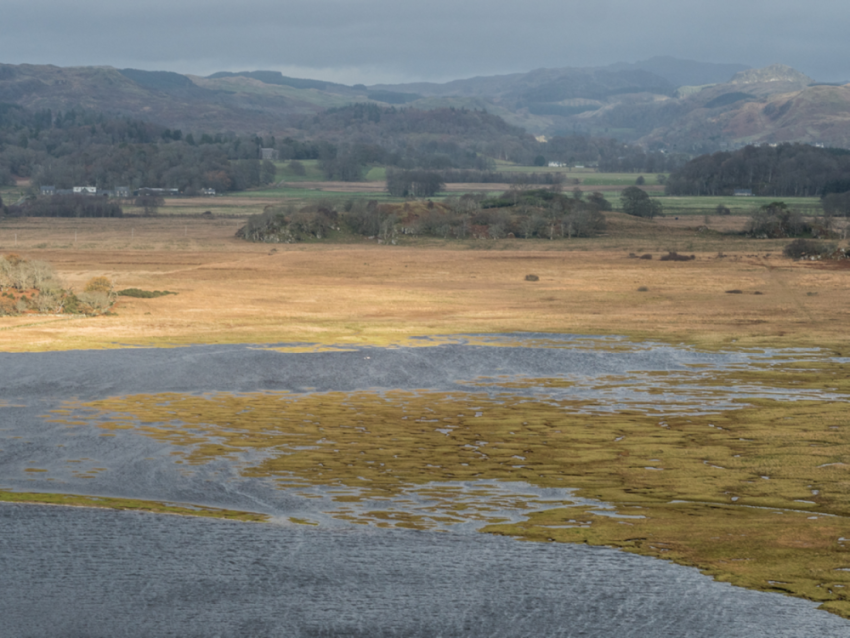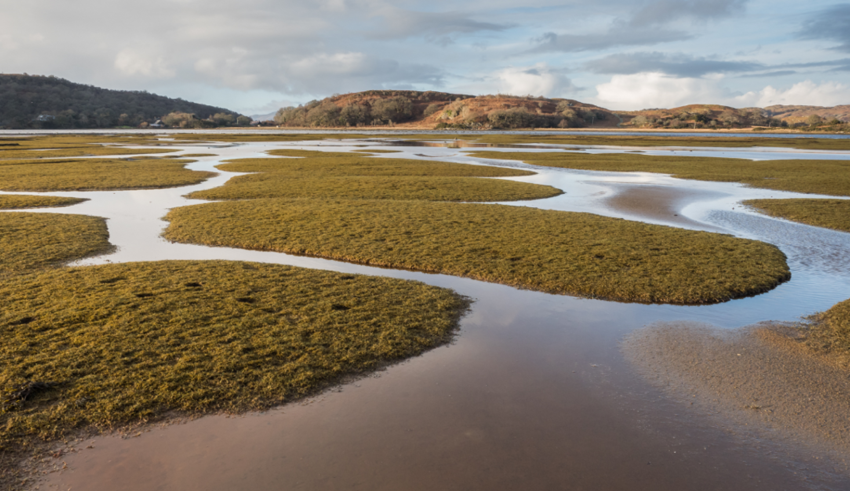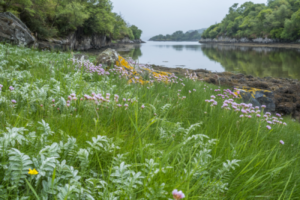Land Management for Saltmarshes
29 August 2023
Saltmarshes in Scotland
Saltmarshes by definition are coastal wetlands which flood and drain again with saline sea water. The amount of flooding is therefore dependent on the tides. The ground is low, flat and poorly drained.
Scotland’s saltmarshes are unique in that the lower ‘pioneer’ saltmarsh that grades into mudflats is scarcer, and many Scottish systems have an abrupt seaward margin that gives way directly to mudflats.
All saltmarshes lack capacity to change because they are formed in sheltered situations. They are however very sensitive to impacts which may compact the soil such as vehicles and over-grazing by livestock.
The vegetation is composed of hardy salt-tolerant plants such as grasses, herbs, or low shrubs which must survive salt, water inundation and desiccation. The soil is composed of deep mud and peat created over many years with decomposing plant material many feet deep. These are fragile habitats easily eroded and play an important part in the aquatic food web and carbon capture. They also provide nutrients to coastal waters and offer habitat to many specialised species. Seen from above, saltmarshes are mosaics of land and water, with sinuous creeks and isolated pans (pools) among the green swards.

Saltmarsh Protection
Saltmarshes are protected under EU legislation including the Habitats Directive (European Commission 1992) and the Water Framework Directive (European Commission 2000; WFD).
Threats to Scotland's Saltmarshes
Erosion: can be caused by vehicles, over-grazing or sediment dynamics such as slight changes in the course of a river. It is suggested that saltmarshes are being lost at the rate of 100ha per year (JNCC). Once erosion does occur it can take decades to heal as saltmarsh growth is slow.
Over-grazing: Grazing has a large effect on saltmarsh vegetation by reducing the height of the vegetation and changing the diversity of plant and invertebrate species. Intensive grazing creates a sward attractive to wintering and passage wildfowl and waders, whilst less intense grazing produces a tussocky structure which favours breeding waders. Severe over-grazing will damage the saltmarsh but in general some grazing is good for it and supports more species by removing the rougher grasses which can dominate the upper marsh areas in particular.
Reclamation: In some places saltmarshes have been fenced or walled in then used for building or intensive agriculture, losing the biodiversity and carbon value of the marshes.
Invasive species: Due to the specialised conditions found on saltmarshes there are not many invasive species as most of the usual ones are not salt tolerant. However, Cord grass, Spartina anglica is a specialised saltmarsh invasive species. Found in shallow muddy estuaries in a few Scottish sites the species can quickly outcompete native species and cover open mud.
Value of Scotland's Saltmarshes
Saltmarshes are high value and provide: filtration services; water regulation; flood defences; refuge and food for a variety of species; public amenity; agricultural services; and support a number of highly restricted and rare species.
Waders and Wildlife: A vital habitat for many coastal birds such as waders and wildfowl particularly geese. They provide feeding habitat all year round but particularly important in the winter.
Sea defence: Saltmarshes act as a buffer between the sea and land and between sea water and freshwater reducing erosion.
Grazing: They are important to farmers for grazing livestock and the meat which comes from livestock grazed on the saltmarsh is known for its superior flavour.
Blue Carbon: Coastal ecosystems such as salt marshes are important global carbon sinks, they sequester and store carbon at significantly higher rates than forests per unit area (The blue carbon wealth of nations. Nat. Clim. Change). In saltmarshes carbon is captured by plants growing in the saltmarsh through photosynthesis and is stored both in the plant and the sediment beneath, which can extend several metres deep. A hectare of saltmarsh can capture two tonnes of carbon a year and lock it into sediments for centuries. If the saltmarsh remains undisturbed the carbon in the soil can be stored for millennia! (SWT)
What You Can Do
 The best management for Saltmarshes is light grazing. This can be sheep or cattle depending on the size and softness of the marsh. Large cattle can be too heavy on a wetter marsh causing erosion even at low numbers. A summer grazing break is good for flowering species and a spring grazing break is good for waders.
The best management for Saltmarshes is light grazing. This can be sheep or cattle depending on the size and softness of the marsh. Large cattle can be too heavy on a wetter marsh causing erosion even at low numbers. A summer grazing break is good for flowering species and a spring grazing break is good for waders.
If grazing is abandoned the habitat can become dominated by coarse grasses losing its botanical diversity and reducing its vale to waders and wildfowl.
If marshes are over-grazed they will quickly start eroding with bare mud appearing. This can take a long time to heal, and wind and water often add to the problem once it begins.
Key Messages
Don’t overgraze or abandon this fragile habitat. Saltmarshes require light grazing to support this specialised plant community along with the wildlife which depends on them . Managing them sensitively will help us combat the climate emergency and biodiversity crisis.
Further Sources of Information
Helen Bibby, SAC Consulting
Sign up to the FAS newsletter
Receive updates on news, events and publications from Scotland’s Farm Advisory Service
